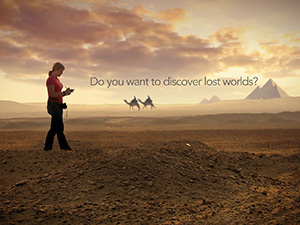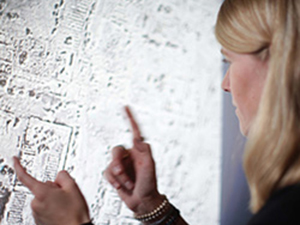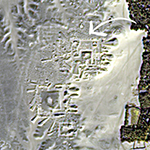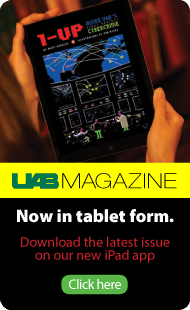Research at UAB
Big picture
In modern medicine, scale is crucial to success. UAB’s research enterprise encompasses thousands of specialists with more than $500 million in annual funding support from federal and state government and other donors.

 “Do you want to discover lost worlds?
“Do you want to discover lost worlds?
And find new ones?”
UAB space archaeologist Sarah Parcak has uncovered buried pyramids, vanished cities, and thousands of ancient tombs in Egypt using advanced satellite-imaging techniques. She literally wrote the book on this pioneering field, and her work has been featured on documentaries for the BBC and the Discovery Channel.“The days when a single person could do cutting-edge science are over,” says President Watts. “To make an impact, you need a strong team, specializing in everything from basic science to the most effective way to translate new discoveries into forms that can impact the entire world. Because UAB has a strong tradition of cross-campus collaboration, we are perfectly positioned to play a leading role in the future of science, medicine, the humanities, and the arts.”
UAB students don’t have to wait for the future to gain hands-on experience in the university’s state-of-the-art labs. As early as their freshman year, motivated students can take part in real research through UAB’s specialized honors programs and courses like the undergraduate major in neuroscience. Each year, more than 3,500 students take part in UAB research.
UAB ranks first nationally among public universities in terms of federal research funding per incoming freshman. It was also one of only 11 recipients of the prestigious Beckman Scholars Award, reserved for universities demonstrating exceptional mentoring and training of undergraduate researchers.
Close-up
Travel from outer space to the burning sands of Egypt to learn more about anthropologist Sarah Parcak’s pioneering remote sensing research in “Picture This.”
Watch a clip from Parcak's new documentary, "Rome's Lost Empire."
 "...Unless she’s using radar, which has its own limitations, 'I’m never actually seeing underground,' Parcak explains.
"...Unless she’s using radar, which has its own limitations, 'I’m never actually seeing underground,' Parcak explains.
'What I’m seeing are very subtle changes on the Earth’s surface that are caused by what is buried underneath...'" Read more
Step into the lab with junior A.T. Helix, a neuroscience major and member of the Global and Community Leadership Honors Program who is studying brain structure in schizophrenia with psychiatry department chair James Meador-Woodruff, M.D., in “Speak Your Mind.”
 “'I first started noticing the problem in my junior year of high school when I started working in my mom’s law office.
“'I first started noticing the problem in my junior year of high school when I started working in my mom’s law office.
'At the time I was considering becoming an attorney, but I realized my true passion was helping people who were unable to help themselves. Most of her clients coming in for drug possession actually had a mental illness and were unaware they could get help; as a result, they turned to self-medication with illicit drugs.
'The fact that people were in desperate need of help and had been forgotten in our community really upset me.'” Read more
Next > What do you want to know today? Training students for tomorrow's careers
